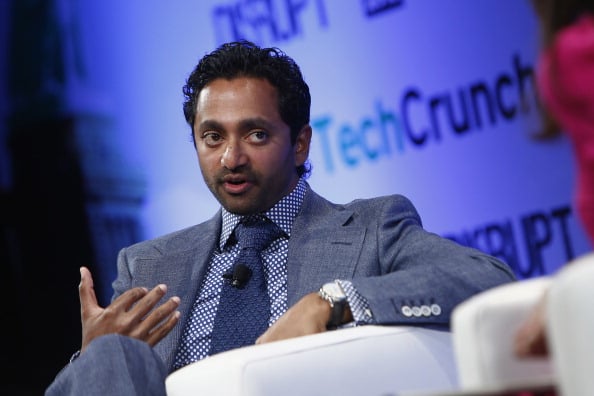Sandy Weill Net Worth, Age, Career Journey, Citigroup Legacy & Philanthropy
Sandy Weill, now 92 years old in 2025, is a name synonymous with Wall Street power, bold mergers, and transformative philanthropy. With a net worth of $1 billion, he remains one of the most influential financial architects of the 20th and early 21st centuries.
Best known as the former CEO and Chairman of Citigroup, Weill’s career is a blueprint for ambition and vision in American finance. His rise from a humble runner on Wall Street to a billionaire business mogul exemplifies a rare combination of timing, strategic insight, and relentless drive.
Early Life and Education
Sanford I. “Sandy” Weill was born on March 16, 1933, in Bensonhurst, Brooklyn, New York City, into a modest Jewish family. He attended Peoples’ Elementary School and Erasmus Hall High School, where he excelled in academics and leadership roles. He later graduated from Cornell University in 1955 with a degree in government.
Just months after graduation, Weill entered the financial world. He began his career at Bear Stearns as a runner—essentially a messenger—and quickly climbed the ranks to become a licensed broker.
The Rise of a Wall Street Giant
Sandy Weill’s first significant business leap came in 1960, when he co-founded the brokerage firm Carter, Berlind, Potoma & Weill. The firm grew through a series of strategic mergers, eventually becoming Shearson Loeb Rhoades, one of the largest brokerage firms in the U.S.
In 1981, Weill sold Shearson to American Express for approximately $930 million in stock, marking one of the most high-profile deals of its time. Weill remained with the company, serving as President of American Express, but later left due to internal leadership conflicts.
Building an Empire: Primerica to Citigroup
Sandy Weill’s next chapter began in 1986, when he invested $7 million of his personal wealth to become CEO of Commercial Credit, a struggling consumer finance company. Under Weill’s leadership, the company became the launchpad for one of the largest financial conglomerates in American history.
- In 1987, he purchased Primerica for $1.5 billion, further consolidating his hold on the consumer finance market.
- By 1992, he acquired a 27% stake in Travelers Insurance for $722 million, strengthening his presence in the insurance sector.
These deals set the stage for Weill’s most significant move: the merger of Travelers Group and Citicorp in 1998, forming Citigroup—the largest financial services company in the world at the time.
Citigroup Leadership and Financial Impact
From 1998 to 2003, Weill served as CEO of Citigroup, and from 1998 to 2006, he held the role of Chairman. Under his leadership, Citigroup became a global financial behemoth, offering a full spectrum of services from investment banking to consumer lending, wealth management, and insurance.
Weill’s aggressive acquisition strategy, corporate vision, and drive for consolidation changed the landscape of global banking. He was instrumental in repealing parts of the Glass-Steagall Act, enabling commercial banks to engage in investment banking—a move that allowed Citigroup’s formation.
Though critics later questioned the long-term consequences of deregulation, Weill’s impact on Wall Street remains undeniable. He was both admired and critiqued as a master of financial engineering, and his leadership style defined an era of modern banking.
Net Worth and Financial Legacy
As of 2025, Sandy Weill’s net worth is estimated at $1 billion, the result of decades of high-stakes deals, stock holdings, and board memberships. His early sale of Shearson, savvy acquisitions, and long-term leadership of Citigroup played a massive role in his financial growth.
Weill also served on several corporate boards and advisory panels, maintaining a strong presence in finance long after stepping down from executive roles.
Philanthropy and Giving Back
Beyond finance, Sandy Weill is a prominent philanthropist, donating hundreds of millions of dollars to causes in education, medicine, and the arts.
Some of his most notable contributions include:
- Weill Cornell Medicine – One of his most significant philanthropic efforts, Weill donated over $600 million to Cornell University’s medical school, which now bears his name.
- The Weill Institute for Neurosciences at UCSF – He and his wife Joan pledged $185 million to fund neurological research.
- Carnegie Hall – A longtime supporter, Weill served as chairman and provided extensive financial support to the historic institution.
- Weill Music Institute – He has funded programs to make music education accessible to underprivileged children.
His philanthropy is deeply rooted in a belief that success should lead to impact—a philosophy that continues to guide his giving even in his 90s.
Family and Personal Life
Sandy Weill has been married to Joan Mosher Weill since 1955. The couple has two children and multiple grandchildren. Joan is an equally active philanthropist and partner in Sandy’s charitable efforts. Together, they have been named among America’s most generous givers by Forbes and The Chronicle of Philanthropy.
Despite his towering business achievements, those close to Weill often cite his personal humility and devotion to family as the traits that truly define him.
Final Thoughts
From humble beginnings in Brooklyn to the boardrooms of billion-dollar corporations, Sandy Weill’s journey is a classic American success story. His net worth of $1 billion in 2025 is not just a reflection of financial success, but also of strategic thinking, fearless leadership, and a commitment to giving back.
At 92, Weill remains a towering figure in both finance and philanthropy, leaving behind a legacy that spans far beyond the balance sheets—and continues to inspire the next generation of leaders.





